The Pacific Swift, scientifically known as Apus pacificus, is a remarkable migratory bird traverses vast distances across the Pacific Ocean.
This slender and agile bird is renowned for its incredible long-distance flights, covering thousands of kilometers during its annual migration.
With distinctive dark plumage and a characteristic sickle-shaped wingspan, the Pacific Swift is adapted for sustained and swift flight. These birds are highly social, often forming large flocks during migration, creating a captivating spectacle in the sky.
Their migratory journey takes them from breeding grounds in Asia to wintering areas in the southern hemisphere, showcasing their adaptability and navigational prowess.
As a species integral to the ecosystem, the Pacific Swift’s migratory patterns and behaviors continue to captivate ornithologists and enthusiasts, highlighting the marvels of avian navigation and survival.
How to Identify Pacific Swift
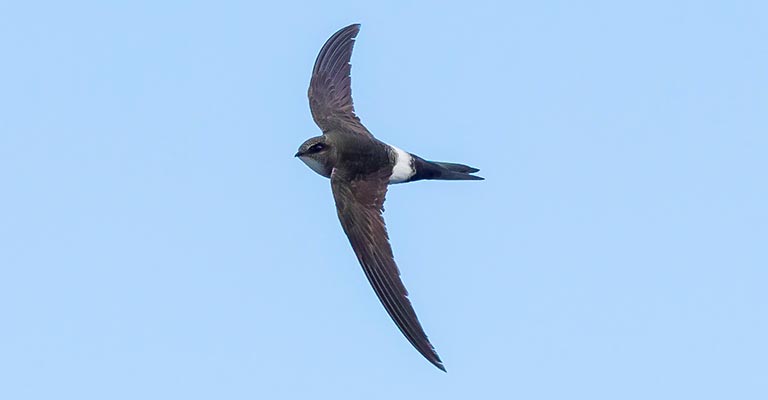
Identifying the Pacific Swift (Apus pacificus) requires a keen eye and attention to distinctive features that set this migratory bird apart.
Characterized by its sleek silhouette and remarkable flying abilities, here are eight key points to help birdwatchers accurately identify the Pacific Swift.
Distinctive Silhouette
The Pacific Swift boasts a slender, streamlined physique with long, pointed wings and a deeply forked tail. Its silhouette, especially during flight, is a key identifier.
The wings, when extended, exhibit a characteristic sickle shape, contributing to the bird’s efficient and rapid flight.
Dark Plumage
The Pacific Swift is uniformly dark, typically displaying shades of brown or black across its entire body.
Unlike some other swift species, it lacks prominent markings or color variations. The dark plumage aids in camouflage during flight, blending seamlessly with the sky.
Long Wingspan
One of the defining features of the Pacific Swift is its impressive wingspan. These birds have elongated wings, often exceeding 40 centimeters, contributing to their exceptional aerial agility.
The wings’ elongation facilitates their ability to cover extensive distances during migration.
Sickle-shaped Wings
As mentioned, the Pacific Swift’s wings are distinctly sickle-shaped, tapering to a point at the tips. This unique wing morphology is an adaptation for sustained and dynamic flight.
Observing this characteristic wing shape is crucial in differentiating the Pacific Swift from other avian species.
Swift and Agile Flight
The Pacific Swift is renowned for its acrobatic flight, effortlessly maneuvering through the air with rapid wing beats.
Birdwatchers should pay attention to the bird’s swift and agile movements, contributing to its success in capturing aerial prey and covering extensive migratory routes.
High-flying Behavior
Pacific Swifts are often spotted at higher altitudes, soaring in the sky with remarkable speed.
Their preference for elevated flight distinguishes them from birds that tend to stay closer to the ground. This behavior aligns with their migratory patterns, navigating across oceans and continents.
Vocalizations
While not as vocally expressive as other bird species, Pacific Swifts emit high-pitched, twittering calls during flight.
The sounds may vary in intensity and frequency, and attentive birdwatchers can use these calls to identify their presence even before spotting them.
Social Behavior
Pacific Swifts are sociable birds, frequently forming large flocks during migration and observing their communal behavior in the sky, characterized by coordinated movements and synchronized flights, confirming their identity.
The spectacle of a sizable group of Pacific Swifts soaring together is a memorable sight for bird enthusiasts.
Identifying the Pacific Swift involves a combination of visual cues, behavioral observations, and an understanding of their distinctive features.
By paying attention to the bird’s silhouette, plumage, wing morphology, flight behavior, and social tendencies, birdwatchers can confidently recognize and appreciate the remarkable Pacific Swift during their migratory journeys.
Taxonomy of Pacific Swift
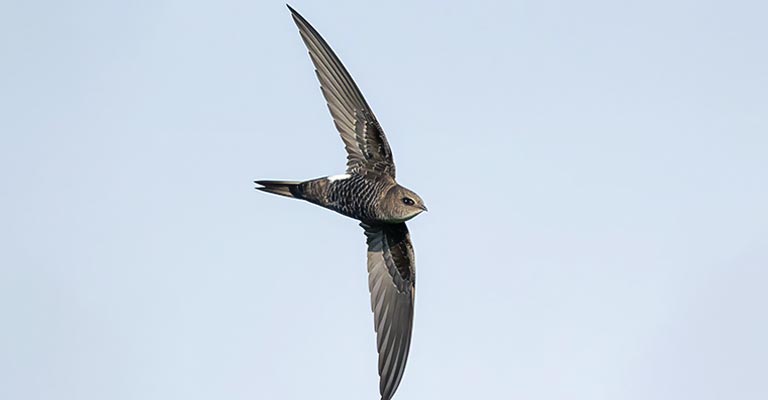
Here’s a table summarizing the taxonomy details of Swifts based on the provided information:
| Taxonomic Level | Classification |
| Domain | Eukaryota |
| Kingdom | Animalia |
| Phylum | Chordata |
| Class | Aves |
| Clade | Strisores |
| Order | Apodiformes |
| Family | Apodidae |
| Genus | Apus |
| Species | A. pacificus |
The Pacific Swift, scientifically known as Apus pacificus, belongs to the family Apodidae within the order Apodiformes. This order encompasses swifts and hummingbirds, characterized by their solid flying abilities.
The genus Apus includes swift species distributed globally. The specific epithet “pacificus” reflects its association with the Pacific region.
As an aerial specialist, the Pacific Swift is adapted to life on the wing, with unique features such as a streamlined body, sickle-shaped wings, and a deeply forked tail.
Its taxonomic classification highlights its evolutionary relationships within the broader context of avian biodiversity.
Common Food of Pacific Swift
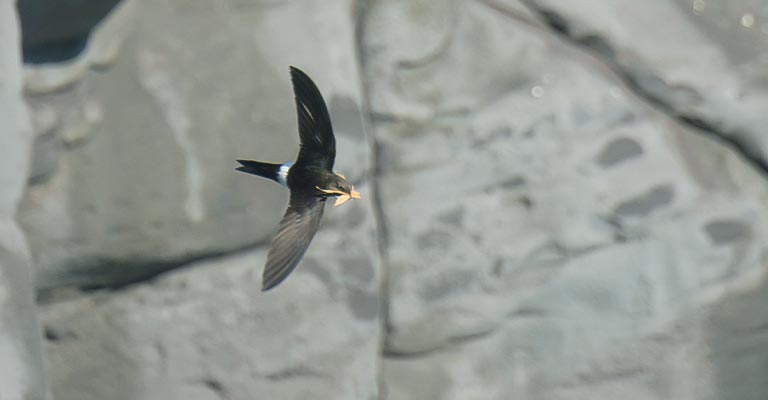
The Pacific Swift (Apus pacificus) sustains itself through a diet primarily consisting of airborne insects. As agile aerial foragers, they skillfully capture their prey during flight, showcasing remarkable flying abilities.
The common food habits of the Pacific Swift include:
- Aerial Insects: Pacific Swifts are adept at capturing a variety of flying insects mid-air. They feed on an array of winged prey, including flies, mosquitoes, termites, and other small airborne invertebrates.
- Flying Ants and Termites: During specific seasons when flying ants and termites swarm, Pacific Swifts capitalize on this abundance, feeding frenzies as they dart through the air to catch these insects.
- Aphids and Small Arthropods: The Pacific Swift’s diet extends to small arthropods like aphids, providing a diverse nutritional intake.
- Insect Swarms: The bird takes advantage of insect swarms, often forming during certain weather conditions or near bodies of water, showcasing the Pacific Swift’s adaptability in locating and exploiting food resources.
- Occasional Spider and Moth Predation: While not the primary food source, Pacific Swifts may occasionally consume spiders and moths, further diversifying their diet based on availability.
This dietary reliance on airborne insects underscores the Pacific Swift’s specialization in aerial foraging, making them integral components of ecosystems as efficient insect controllers.
Pacific Swift Life History
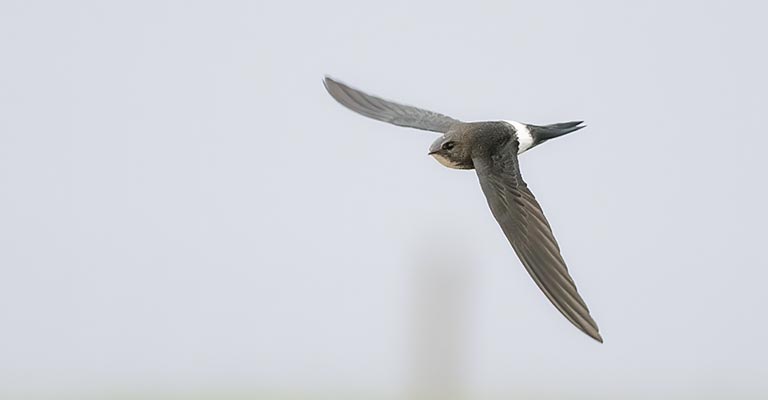
The life history of the Pacific Swift (Apus pacificus) unfolds as a fascinating journey marked by extraordinary migratory feats and adaptations.
Each aspect contributes to the intricate tapestry of the Pacific Swift’s existence, from its habitat preferences to nesting behaviors, breeding strategies, and conservation concerns.
Habitat
Pacific Swifts primarily inhabit open landscapes, including forests, grasslands, and urban areas.
They are highly adaptable and thrive in diverse environments. During migration, their habitat extends over vast oceanic expanses, showcasing their ability to traverse varied landscapes.
Range Map
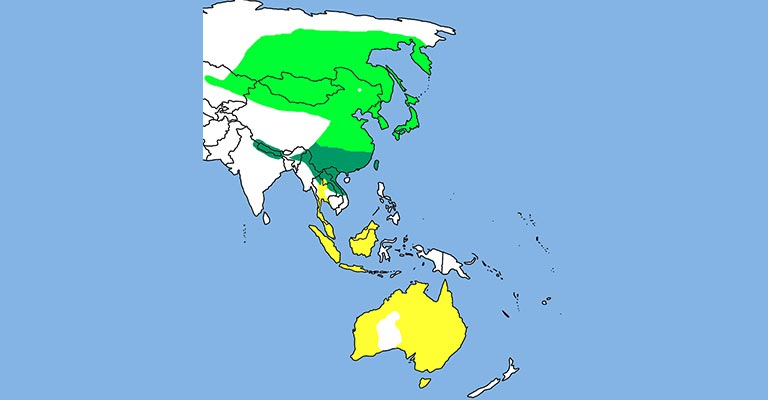
The Pacific Swift has an extensive range, breeding in parts of Asia and migrating to wintering grounds in the southern hemisphere.
A range map depicts their migratory routes, highlighting key stopover points and wintering destinations, emphasizing their significant role in intercontinental ecosystems.
Nesting
These birds are cavity nesters, often utilizing natural sites like tree hollows or cliffs. However, they readily adapt to human structures, frequently nesting in buildings, bridges, or other man-made structures.
Their cup-shaped nests are constructed from feathers, plant material, and saliva, showcasing their resourcefulness in creating secure breeding sites.
| Nesting Details | Details |
| Clutch Size | Typically one egg |
| Number of Broods | Single brood per season |
| Egg Length | Approximately 1.2 cm |
| Egg Width | Around 0.8 cm |
| Incubation Period | Approximately 19 days |
| Nestling Period | About 6 weeks |
| Egg Description | White or creamy with a smooth surface |
| Nest Type | Cup-shaped nest, often in tree hollows or man-made structures |
| Nesting Material | Feathers, plant material, and saliva |
| Parental Involvement | Both parents contribute to incubation and chick-rearing |
| Nesting Sites | Natural sites like tree hollows or cliffs, and human structures |
| Nesting Behavior | Monogamous pair bonding with aerial displays during courtship |
Breeding
Pacific Swifts engage in monogamous relationships during the breeding season. Mating pairs perform aerial displays, emphasizing their strong bond.
Females lay a single egg, and both parents contribute to incubation and chick-rearing duties. Their long lifespan and migratory capabilities compensate for the relatively low reproductive output.
Diseases
While the Pacific Swift generally exhibits robust health, it may be susceptible to diseases common among birds.
Avian diseases, including respiratory infections and parasites, can impact their well-being, particularly in densely populated nesting areas.
Treatment
Conservation efforts often involve monitoring and treating diseases affecting Pacific Swift populations. Interventions may include habitat management, reducing environmental pollutants, and addressing factors contributing to the spread of diseases.
Collaboration with wildlife veterinarians and researchers is crucial for effective treatment strategies.
Conservation
Pacific Swifts face threats related to habitat loss, climate change, and disturbances in nesting areas.
Conservation initiatives focus on protecting breeding and migratory habitats, raising awareness about the importance of these birds, and implementing measures to minimize human-induced disturbances.
International collaboration is essential for conserving this migratory species, emphasizing the interconnectedness of ecosystems across their range.
The life history of the Pacific Swift is a testament to adaptability, resilience, and the delicate balance between natural processes and anthropogenic influences.
Understanding and safeguarding the various facets of their existence is essential for ensuring these remarkable avian travelers’ continued survival and well-being.
10 Behavioral Habits of Pacific Swift
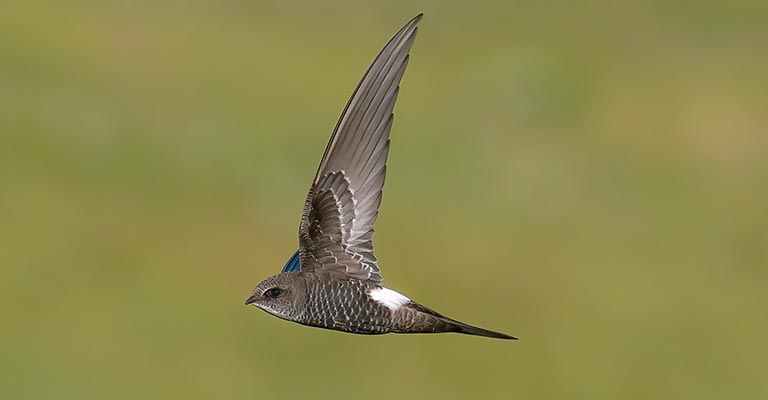
The Pacific Swift (Apus pacificus), with its sleek silhouette and remarkable migratory prowess, exhibits a range of fascinating behavioral habits that contribute to its adaptability and survival.
From intricate courtship rituals to synchronized flight patterns, ten noteworthy behavioral habits define the Pacific Swift.
Aerial Foraging
Pacific Swifts are adept aerial foragers, capturing insects in flight with remarkable agility. Their swift and acrobatic maneuvers allow them to navigate the air and seize flying prey, showcasing their specialized feeding behavior.
High-altitude Soaring
These birds are often observed at high altitudes, soaring effortlessly through the sky. This behavior is particularly pronounced during migration, where they cover extensive distances over open oceans and varied landscapes.
Monogamous Pair Bonding
Pacific Swifts engage in monogamous relationships, forming strong pair bonds during the breeding season. Courtship displays involve aerial acrobatics, highlighting their commitment to mate selection.
Colonial Nesting
While Pacific Swifts may nest individually in tree hollows or cliffs, they also exhibit colonial nesting behaviors, forming large groups in urban areas where they utilize man-made structures.
This communal nesting provides benefits in terms of security and social interactions.
Synchronized Flight
During migration and while foraging, Pacific Swifts display remarkable coordination in flight.
Large flocks engage in synchronized movements, creating mesmerizing patterns in the sky as they navigate through the air with precision.
Vocalizations
While not as vocal as other bird species, Pacific Swifts emit distinctive high-pitched calls during flight. These vocalizations, though subtle, contribute to their communication within flocks and during courtship displays.
Adaptation to Urban Environments
Pacific Swifts have adapted well to urban environments, utilizing buildings and bridges for nesting. This adaptability to human structures reflects their resourcefulness in finding suitable breeding sites.
Long-distance Migration
One of the most extraordinary behavioral habits of the Pacific Swift is its long-distance migration.
These birds cover thousands of kilometers, crossing the Pacific Ocean and other vast expanses to reach their wintering grounds in the southern hemisphere.
Communal Roosting
Outside of the breeding season, Pacific Swifts often gather in communal roosts. These gatherings provide a secure environment and opportunities for social interactions among individuals.
Territorial Displays
Pacific Swifts engage in territorial displays during the breeding season, defending nesting sites from potential intruders.
These displays involve aerial chases and vocalizations, emphasizing their commitment to protecting their breeding territories.
The behavioral habits of the Pacific Swift showcase a combination of specialized adaptations for flight, social interactions, and resource utilization.
These habits contribute to the species’ success in diverse environments and highlight the marvel of avian behavior.
Wrapping Up
The Pacific Swift (Apus pacificus) captivates with its aerial prowess, monogamous bonds, and migratory marvels.
From synchronized flights to adaptable nesting, the intricate behavioral habits of these birds underscore their resilience and ecological significance.
As guardians of the skies and navigators of vast distances, Pacific Swifts symbolize the wonders of avian adaptation and survival.
Understanding and appreciating these behavioral intricacies contribute to the broader tapestry of avian ecology, emphasizing the need for conservation efforts to preserve the habitats and conditions that sustain these remarkable birds.